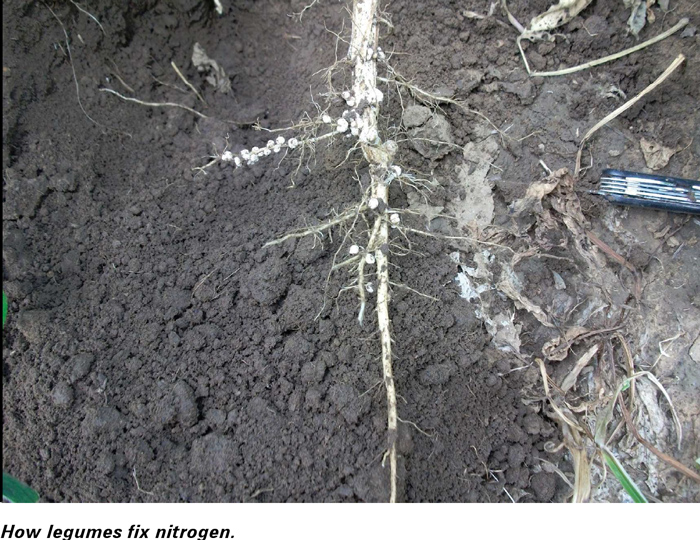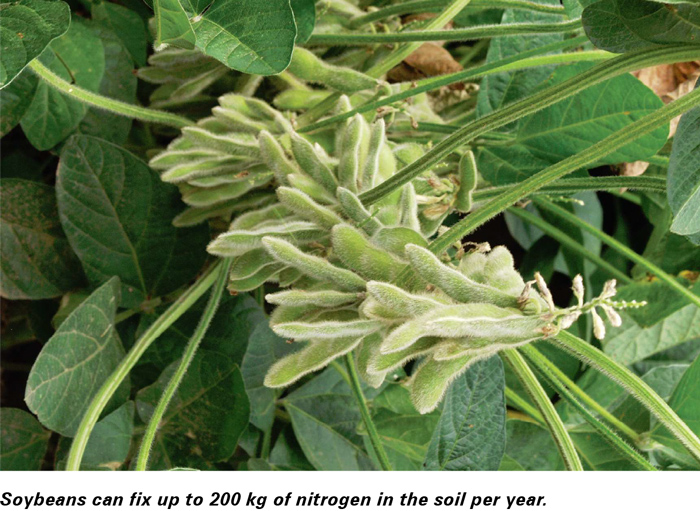January 2020
|
Jenny Mathews, Pula Imvula contributor. Send an email to jenjonmat@gmail.com |
 |
Growing the same crop year after year is called mono-cropping. Crop rotation is a planned, systematic approach where different crops are grown in a sequence which changes year to year and season to season. It was once quite normal for producers to plant the same crop every year. Some of the motivation would have been ease of marketing or lack of proper equipment to diversify.
There has been a huge shift away from mono-cropping as farmers have grown more concerned about soil health and reducing their dependence on costly fertiliser programmes and chemicals to control weeds, pests and diseases. Grain SA actively promotes crop rotation in its Development Programme.
Crop rotation systems can differ from two to four or more years. A longer crop rotation interval is more effective than a short one. Following the exact same rotation year in and year out is also not beneficial in the long term i.e. to plant maize – sunflowers – maize – sunflowers… is not crop rotation. Variety is the name of this game and it may play out from year to year or even from season to season with the same year (i.e. double cropping).
Crop rotation is not a one-size-fits-all formula. Each farmer needs to consider their own unique needs and circumstances – input finance, farm size, equipment available, environmental conditions and market opportunities. The rotation plan needs to contribute to a sustainable farming operation.

ADVANTAGES OF CROP ROTATION
Increased soil fertility
Every different crop has a different nutrient interaction with the soil in which it grows and each type releases and absorbs different nutrients. Prolonged planting of one crop year on year leads to a depletion of specific nutrients in the soil because that plant keeps on extracting the same nutrients from the soil. Crop rotation addresses deficiencies or excesses of nutrients in the soil and contributes towards increasing soil fertility. Different crops contribute to replenishing nutrients that have been depleted while absorbing other nutrients that are in abundance.
Increased crop yield
Healthy soils have a variety of nutrients readily available to the plants and stimulate growth. If a land seems to be producing less than it has been known to previously, farmers are advised to monitor soil health and introduce a crop rotation system.
Increased nutrient levels in the soil
Soils need to be rejuvenated and regenerated and heavy fertilisation programmes are not the best way. We have learned that soils have the ability to rectify themselves. This is achieved through crop rotation and even through the practice of fallowing, if the farmer can afford to rest the field for a season. This is not an option available to many, so farmers need to be willing to diversify their farming activities for the sake of soil health.
By planting a crop like a legume e.g. groundnuts, different bean crops, chick peas or lentils, it is possible to increase nitrogen (N) in the soil. A legume is known to be a nitrogen fixing plant which means it has the ability to draw N from the atmosphere and carry this to the root nodules which fix (inject) nitrogen into the soil. Soybeans can fix up to 200 kg of nitrogen per hectare in one year. Farmers must learn which type of plant to grow for which benefit, so as to continuously ensure that fertility levels are built up over time.
By alternating crops between deep-rooted broad-leaved plants e.g. legumes, sunflowers to shallow-rooted grass species e.g. maize, sorghum, one is facilitating the ‘mining’ of nutrients and moisture from different depths.

Improved soil structure
Healthy soil structure is critical for crop development as it affects seed germination and the way the roots grow, as well as how easily water, air and nutrients are made available to the plants. Crop rotation can help to improve soil structure, but it depends on the type of crops rotated, so learn which are deep or shallow rooted plants and rotate accordingly. This contributes towards loosening the sub-surface of the soil and improves soil structure by supplying a higher content of organic matter and providing habitat for more diverse soil organisms.
There is also increased aeration, water retention and drainage. Soils with good structure enable the quick and effective absorption of water so the moisture is not lost to run-off or evaporation. Some of the water is greedily taken up by the plants but the remainder is held deep in the soil, like a groundwater reservoir system, and saved for dry periods when plants need to dig deeper to find moisture.
Reduced soil erosion
Soil erosion is a widespread problem. It occurs when the top layer of soil is carried away by wind or if it flows away after a heavy storm. Different plants have different root systems, water requirements, different spacing and grow different canopies of shade. By growing one type of plant repeatedly, the soil will erode in places where plants have left it uncovered. When the surface of the soil is covered by plants or dry material, the problem is reduced. Different types of crops leave different levels of crop residue behind e.g. maize leaves a lot more material behind which is good for incorporating organic material into the soil and improves soil structure and encourages microbial activity which brings the soil to life. Crop residue is also important for reducing surface crusting and water run-off.
Reduced levels of pests and diseases
Crops from the same family have the same disease and insect problems. In other words, each different type of plant creates a specific habitat which tends to have the same pathogens or pests repeatedly concentrate around them. By repeatedly planting their crop of choice we are creating favourable conditions for the same pests every time and are literally inviting them to come and dine! By alternating the plant type in a field, one contributes to pest and disease control by breaking the life cycle of the pest in their preferred habitat. Crop rotation is recognised as one of the important methods of Integrated Pest Management which is a more environment friendly method of pest management aiming to reduce widespread use of chemicals in agriculture.
Improved weed control
Crop rotation is a well-known traditional weed control technique. Different crops interact with the weed population by crowding them out of the field and competing for nutrients and other resources. A farmer will always have to manage the weeds in a field, but crop rotation does contribute to lowering weed population.

A CAUTIONARY NOTE
There are fewer disadvantages than advantages in crop rotation. However, it is important to plan the chemical programme. Different chemicals react differently on different crops e.g. sprays used on broad leafed crops will negatively impact grassy type crops like maize. Chemicals have different residual effects on a field – some chemicals stay active in the soil and impact the follow-up crop. For this reason, a crop rotation system is planned for the long term; and the chemicals to be used year on year are planned in consultation with experts. There are certainly products which can be used safely within planned crop rotation systems.
Publication: January 2020
Section: Pula/Imvula